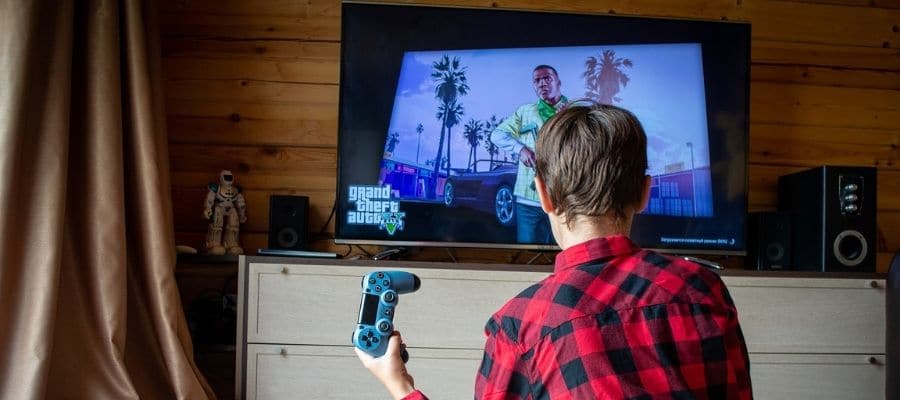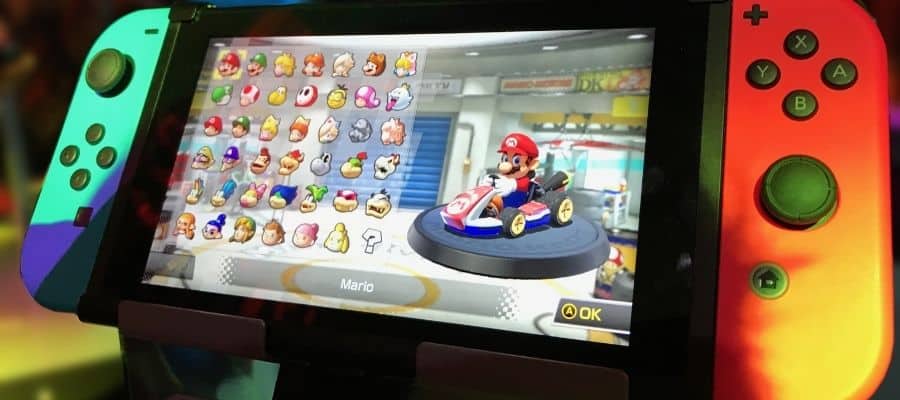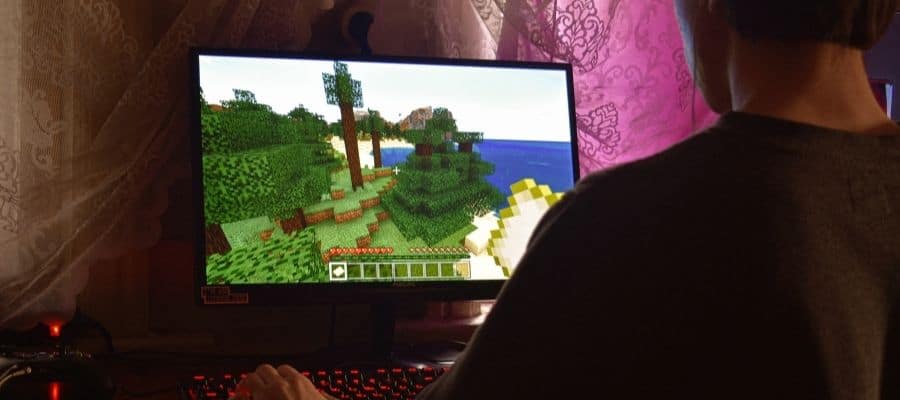All true gamers have experienced it. The feeling of unboxing a new game. Struggling to remove the cellophane wrapping, as your fingers keep slipping off the cover. Trying to get your fingernails underneath that pesky adhesive tape holding the box shut. And listening to that satisfying “pop” as the box finally opens to reveal a shiny disk containing hours of enjoyment within.
Sure, we’ve moved on to digital distribution platforms these days, but the anticipation surrounding a new game purchase hasn’t changed. You probably poured hundreds of hours into one single game, the one that you loved the most. We’ve all done it. There is just something about your favorite game which hooks you in, keeps you immersed inside its virtual world for what seems like forever. But you don’t count hours when you’re playing; they fly by without you even realizing it.
How do games manage to keep us engaged? What is it that drives player engagement in a video game, be it a mobile, PC, or console title? Depending on the genre, production budget, and platform, the engagement techniques used by developers can vary greatly. However, there is a core engagement loop common to literally every game out there.
We can also call it a motivation loop; this is the thing that keeps you glued to the screen. There are three key components to it- Objective, Challenge, and Reward, in that specific order. First, you give the player a well-defined goal to accomplish (Objective). Then, you try and make them work for it by placing smaller goals along the path (Challenge). Finally, you gift them with virtual goods such as badges or points to reinforce this behavior (Reward).
Player engagement or motivation is based around fun and a sense of “belief” in the imaginary world of your game. You are asking the player to come and play in your world with your rules. It is a negotiation between the developer and the player. Universe coherency matters, along with credibility and accessibility.
As soon as the player is on board, they need to identify with something inside the game in order to get their sense of purpose. Story, world, and gameplay are fine tools by themselves but exist to serve a greater role, which is to create a need for the player to do stuff.
Engagement within a game can be defined as a state of immersion that is so strong that you “zone out” from the real world. There are two types of engagement- short-term and long-term. Both of these are goal-driven and based around short-term + long-term goals within the game. Now, let us discuss 11 ways for you to boost engagement for your game.
Create A Fun Experience

If your game doesn’t deliver on enjoyment, players will leave it after a couple of hours. And that is if you’ve made a premium PC or console game. If it is a F2P mobile title, you can say goodbye to the player within 5 minutes.
So, how to create a fun game? That isn’t something we can teach, but there are a few tips you can consider. First, make sure your game works. By that, we mean it must be free from glitches and bugs. Invest in good level design, and if it is a multiplayer title, make sure there is a proper balance between the classes.
Another thing to look out for is broken game mechanics. Say the player is able to jump in the first level, and suddenly when they reach the second level, the jump no longer works. That can be frustrating unless you clearly explain to the player why it doesn’t work, maybe it is a shift in the environment, or perhaps the hero lost his powers temporarily.
Work On Game Quality

What do we mean by game quality? Simple, you need to invest in the production value of your game—pretty visuals, good sound design, smooth-looking animations, etc.
If you’re developing a mobile game and monetizing it with ads, make sure they aren’t too intrusive. Use interstitials or rewarded videos instead of banner ads. Or give the player an option to go premium (ad-free) for a certain amount of money.
In an indie game for the PC or console, you’re looking to create hypnotic music that captures the player and stays in their subconscious mind even after they have turned off the system. You can use the Unity marketplace or TurboSquid to purchase high-quality assets. If you’re on a budget, try out sites such as Freesound and Textures.
Provide A Challenge

This can be done in various ways, by adding more levels or increasing the difficulty gradually as the player progresses through the game. Angry Birds and Candy Crush use the progressive difficulty technique to its fullest extent, even though they are pretty easy to get started with.
Use the environment to set up traps or confuse the player, and hide consumable items for health so they can regenerate their lives if they manage to beat the immediate hurdles. This will let players explore the game mechanics and get a feel for how your game plays without losing on their first try.
Set up mini-bosses before the actual boss, and give short-term goals for the player to work towards. After all, they need to know why they are jumping through all these hoops.
Players Need A Real Sense Of Character Development

This ties in with our previous point of creating challenges or hurdles for the player to beat. But they need to get a sense of character development while completing these challenges. Provide power-ups and boosters for an immediate sense of control, so the player feels overpowered for a short duration. Then, allow them to purchase upgrades and level up their character through the resources they collected along the way.
Balance the difficulty curve, so the player feels as though the game is getting tougher, but their character is also growing proportionally to keep things balanced. Unlockable abilities, vehicles, weapons, etc., are a great way to add progression while giving players a sense of accomplishment and pride for unlocking all the fun stuff. This makes sure they keep playing with a clear goal in mind.
Make Players Curious

When you’re watching a thriller movie, you are in constant suspense. You have no clue what’s behind that door or how the hero will get out of a tough situation. In the game, you are trying to create a similar atmosphere through the story and gameplay.
Don’t make the main character seem too overpowered, and introduce surprise or hidden levels filled with enemies. This will disrupt the natural flow of the game and refresh the player’s mind. Throw in loot boxes, treasure chests, etc., with random rewards.
Maybe implement a system where the player gains a random superweapon after beating the boss on each level. In combination with randomly generated levels, a compelling plot will keep the player on their toes at all times. They will keep playing to find out what happens next, similar to how suspense exists in a thriller movie till the end.
Design Unlockable Items

Say you’re working on an endless runner, similar to Temple Run. It will eventually get boring if the entire game revolves around the character running along the same track. To spice things up, you can introduce unique mechanics such as jetpacks, rocket skates, shields, coin magnets, etc., that will allow the player to do a multitude of things even though the track is the same.
These items can only be unlocked through coins collected during the run, which means players will keep playing for hours till they get enough coins for the next big upgrade. Use cleverly designed logos for the items to make players feel like they need to unlock them, and write descriptions that give a general vibe of what the item does but without divulging every single detail.
You can construct tiers for each item, like bronze, silver, gold, and platinum, with each tier costing more coins while offering extra bonuses. All of these items change the gameplay and require the player to spend more time playing so they can unlock these items.
Character And Profile Customization

This one is a pretty basic concept, but it works. We are wired by nature to try and stand out from the crowd, constantly looking for ways to personalize our appearance and mannerisms. The same applies to a game where players will pay money to purchase or unlock new cosmetic items.
Depending on the type of game you create, there can be tons of potential for personalized experiences. Is it an endless runner like Subway Surfer? Try out cool surfboard designs, and provide customization for individual clothing pieces such as boots, caps, jackets, etc. Are you creating a car racing game? Give users cool new car designs, and you can even throw in unconventional vehicles such as boats or scooters just for fun!
Add A Multiplayer Component

You can add depth to a game simply by incorporating a PvP element. There are two ways to do this- by using bots or actual players. Or a combination of the two, where players start out against bots to ease themselves into the gameplay mechanics.
User-Generated Content

By incorporating a level generator editor into your game, you can add a vast amount of potential engagement. Players will be motivated to try out cool concepts, and they will keep on playing your game for a long time. Most of them will constantly tinker with various elements until they create something cool.
Features like these will increase development costs, but they are well worth it if you want to drive long-term player engagement. It is an endless source of content, and you don’t even have to do anything because the players will do it themselves.
Update The Game Regularly

If you want to motivate players who are tired of the old content, you need new stuff. New weapons, new levels, new mechanics, graphics overhaul, etc. Release blog posts, talking about the new update, and upload videos on your official Youtube channel showing the new content in action. Constantly releasing new content is one of the best ways to keep current players engaged, and it also has the positive side effect of drawing in new players.
The Compulsion To Act Immediately

Okay, this will sound pretty sinister, but you must make players feel like they need to take action if they want to avoid negative consequences. Trust us, this works very well and will draw players straight into the game even if they weren’t originally planning on doing so.
It is quite simple to execute. All you need to do is organize daily challenges or similar activities. As a reward, players will be gifted a limited edition item that can only be obtained by completing the aforementioned challenges. Most people will be scared of losing out on some cool cosmetic skins, so they will jump into the game for a while just to complete the daily challenge.
Conclusion
What is the single most important thing you can do to captivate the attention of players? Design a fun gameplay loop. There is no getting around the fact that you need an enjoyable game in order to engage players. All the points we listed simply build on top of that.
Also, consider the fact that you need to design a robust rewards system that contains something for all types of players. You need different rewards for different actions. There are achievers, socializers, performers, and explorers. Achievers are the ones who build stuff and compare themselves to others. Socializers will try to help others and share their progress with friends. Performers are the ones looking for max KDA in online multiplayer games, trying to dominate others with skill. Explorers are hunting after hidden items, doing quests, and trying to get 100 percent completion in every single open-world RPG they play.
Divide your goals system into 3 sections- short term, midterm, and long term. Short-term goals happen between 0 to 60 seconds from now. Midterm goals happen between 1 to 20 minutes from now. And a long-term goal is anything that happens more than 20 minutes from the current time.
As a final note, you can hide certain features at the start of the game and have the player discover them through gameplay as they progress forward. This will motivate exploration and increase player curiosity, which in turn boosts engagement.

